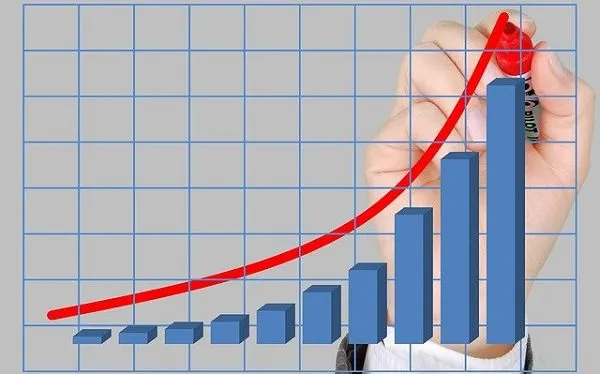Rising premiums are the increase in the amount of money that policyholders have to pay for their insurance coverage. They matter because they affect the affordability and accessibility of insurance for consumers, as well as the profitability and sustainability of insurance companies.
There are many factors that contribute to rising premiums, such as economic inflation, social inflation, weather, and reinsurance costs. Economic inflation is the general increase in the prices of goods and services over time, which affects the cost of repairing or replacing damaged or lost property, as well as the cost of medical care for injured people. Higher inflation means higher insurance payouts, which leads to higher premiums.
Rise in litigation and settlement costs, driven by factors such as more aggressive lawyers, higher jury awards, and changing social attitudes towards liability and compensation. More lawsuits and larger settlements mean higher insurance claims, which leads to higher premiums.
Changing weather patterns and natural disasters, such as hurricanes, floods, wildfires, and hailstorms, on the frequency and severity of property damage. More extreme weather events mean higher losses for insurers, which leads to higher premiums.
Rising premiums can have negative consequences for both consumers and insurers. Consumers may face financial hardship, reduced coverage, or lack of insurance options.

Below we will discuss main factors of rising premium:
Economic inflation: How the general increase in prices affects insurance costs
Economic inflation is the general increase in the prices of goods and services over time, which affects the cost of repairing or replacing damaged or lost property, as well as the cost of medical care for injured people. Higher inflation means higher insurance payouts, which leads to higher premiums.
One of the factors that influences inflation is the consumer price index (CPI), which measures the changes in the prices of a basket of goods and services that are typically purchased by consumers. The CPI is used to calculate the inflation rate, which is the percentage change in the CPI over a given period of time. The inflation rate reflects the purchasing power of money, or how much goods and services can be bought with a unit of currency.
When the inflation rate is high, the purchasing power of money decreases, meaning that consumers need more money to buy the same amount of goods and services as before. This also means that the costs of repairing or replacing property and providing medical care increase, as the prices of materials, labor, and equipment rise. For example, according to the U.S. Bureau of Labor Statistics, the CPI for all items increased by 5.4% from June 2020 to June 2021, the largest 12-month increase since August 20082. During the same period, the CPI for medical care services increased by 1.0%, and the CPI for motor vehicle maintenance and repair increased by 6.4%.
Insurance companies have to adjust their premiums to reflect the rising costs of claims and operating expenses due to inflation. If they do not, they may not have enough funds to pay for future claims or cover their overhead costs. Therefore, higher inflation leads to higher insurance premiums for consumers, which can affect their affordability and accessibility of insurance coverage.
Social inflation: How the rise in litigation and settlement costs impacts insurance claims
Social inflation is the term used by insurers to describe the rising costs of insurance claims resulting from factors such as increasing litigation, broader definitions of liability, more plaintiff-friendly legal decisions, and larger compensatory jury awards. Social inflation impacts insurance claims by driving up the amount and frequency of payouts, as well as the legal and administrative expenses associated with handling claims.
Some of the causes and consequences of social inflation are:
- Increasing litigation: More people are suing businesses, professionals, and public entities for various reasons, such as personal injury, product liability, medical malpractice, environmental damage, or civil rights violations. Some of these lawsuits are funded by third-party litigation finance (TPLF) companies, which invest in legal action in return for a percentage of a successful claim sum. TPLF can incentivize litigants to initiate and prolong lawsuits, as well as demand higher settlements.
- Broader definitions of liability: The legal system is expanding the scope and standards of liability, making it easier for plaintiffs to establish fault and causation, and harder for defendants to avoid or limit responsibility. For example, some courts have adopted the doctrine of enterprise liability, which holds that all companies in an industry can be held liable for the harm caused by any one of them.
- More plaintiff-friendly legal decisions: The courts and juries are becoming more sympathetic to plaintiffs and more hostile to defendants, especially large corporations. They are more likely to award punitive damages, which are meant to punish and deter wrongful conduct, in addition to compensatory damages, which are meant to cover the actual losses suffered by the plaintiff. Some of these awards are excessive and disproportionate to the harm caused.
- Larger compensatory jury awards: The juries are awarding higher amounts of compensatory damages, especially for non-economic losses, such as pain and suffering, emotional distress, or loss of consortium. These damages are subjective and difficult to quantify, and can vary widely depending on the jury’s perception of the plaintiff’s situation and the defendant’s conduct.
Social inflation can have negative effects on both consumers and insurers. Consumers may face higher insurance premiums, reduced coverage, or lack of insurance options, as insurers try to recover their losses and maintain their profitability. Insurers may also face lower profits, higher expenses, or increased risk exposure, as they have to pay more for claims and reinsurance, and face more uncertainty and volatility in their business.
Therefore, it is important for both consumers and insurers to understand the factors that affect social inflation and find ways to mitigate them. Some possible solutions include improving risk management, increasing consumer awareness, promoting competition, and encouraging innovation.
Weather: How changing weather patterns and natural disasters lead to higher losses for insurers
Weather is the term used to describe the atmospheric conditions at a given place and time, such as temperature, precipitation, wind, and cloudiness. Weather can vary from day to day, season to season, and year to year, depending on factors such as the Earth’s rotation, the sun’s radiation, the ocean currents, and the atmospheric circulation.
Climate is the term used to describe the long-term average of weather conditions over a large area, such as a region, a continent, or the whole planet. Climate can be influenced by natural factors, such as volcanic eruptions, solar activity, and orbital changes, as well as human factors, such as greenhouse gas emissions, land use changes, and aerosol pollution.
Climate change is the term used to describe the significant and persistent changes in the Earth’s climate over decades or longer, caused by natural or human factors. Climate change can affect the frequency, intensity, duration, and spatial distribution of weather events, such as heat waves, droughts, floods, storms, and wildfires.
Natural disasters are the term used to describe the extreme and sudden events that cause severe damage and disruption to human lives, livelihoods, and ecosystems, such as earthquakes, tsunamis, volcanic eruptions, landslides, avalanches, and meteor impacts. Natural disasters can be triggered or exacerbated by weather or climate events, such as heavy rainfall, strong winds, high temperatures, and sea level rise.
Weather, climate, and natural disasters can affect the losses for insurers in several ways, such as:
- Increasing the exposure of insured assets and populations to weather or climate hazards, such as coastal properties, agricultural crops, urban infrastructure, and vulnerable communities.
- Increasing the severity and frequency of weather or climate-related claims, such as property damage, business interruption, crop failure, health impairment, and mortality.
- Increasing the uncertainty and volatility of weather or climate-related risks, such as the occurrence of unprecedented or compound events, the emergence of new or shifting hazards, and the non-linearity or feedbacks of climate systems.
- Increasing the costs and challenges of risk assessment, management, and transfer, such as the availability and quality of data, the reliability and validity of models, the adequacy and affordability of coverage, and the effectiveness and efficiency of adaptation measures.
According to a report by the World Meteorological Organization (WMO) and the UN Office for Disaster Risk Reduction (UNDRR), from 1970 to 2019, weather, climate, and water extremes accounted for 50 per cent of all disasters, 45 per cent of all reported deaths, and 74 per cent of all reported economic losses. The report also found that the number of disasters increased five-fold over the period, from 711 to 3,536, while the economic losses increased seven-fold, from $49.4 billion to $383.9 billion per year.

Reinsurance: How the insurance for insurance companies influences the rates for policyholders
Reinsurance is essentially insurance for insurance companies. It involves transferring some of the risks that an insurer has assumed from its policyholders to another insurance company (the reinsurer).
The primary purpose of reinsurance is to spread risk and limit exposure for the original insurer.
When an insurer sells policies to its customers (policyholders), it assumes the risk associated with those policies, purchasing reinsurance, the insurer can transfer a portion of that risk to the reinsurer.
In return, the reinsurer agrees to pay a share of the claims incurred by the insurer and allows the insurer to remain solvent by recovering part of the payout when claims occur.
It helps insurers manage their underwriting risks by limiting large losses, it stabilizes the insurance cycle and reduces the chances of insolvency and strengthens the financial viability of insurance firms. It provides access to liquidity creation activities.
Insurers can take on more policies without significantly increasing their capital by using reinsurance and allows them to cover higher-risk customers or offer policies with higher coverage limits.
What can consumers do to cope with rising premiums and find the best coverage for their needs
In conclusion, as consumers grapple with rising insurance premiums, there are several strategies they can employ to navigate this challenging landscape and secure the best coverage for their needs.
Don’t settle for the first policy you come across. Compare quotes from different insurers to find the most competitive rates. Online comparison tools and independent agents can be valuable resources. Understand what coverage you truly require. Consider factors like your assets, risk tolerance, and financial situation. Opt for coverage that aligns with your specific circumstances.
Take proactive steps to reduce risk. For example, installing security systems in your home, maintaining a healthy lifestyle, and practicing safe driving can all positively impact your insurability and premiums.
Many insurers offer discounts if you bundle multiple policies (such as home and auto insurance) with them. Consolidating your coverage can lead to cost savings. While it involves assuming more risk, increasing your deductibles can lower your premiums. Just ensure you have sufficient funds set aside to cover the deductible in case of a claim.
Insurers often consider credit scores when determining premiums. A strong credit history can lead to more favorable rates. Some insurers offer programs that track your driving habits or home security practices. If you demonstrate responsible behavior, you may qualify for discounts.
Keep an eye on industry trends, regulatory changes, and new insurance products. Being informed allows you to make better decisions. Consult an independent insurance agent or financial advisor. They can provide personalized guidance based on your unique situation.
If you receive a premium increase, don’t hesitate to negotiate with your insurer. Ask about available discounts, loyalty rewards, or any other cost-saving options.
Remember that insurance is an essential safety net, and while premiums may rise, thoughtful planning and informed choices can help you find the right coverage without breaking the bank.